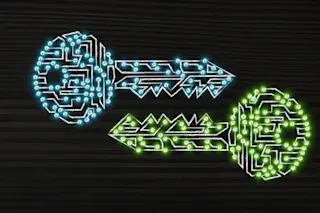A one-minute download is all you need to access the internet’s subconscious: the dark web. It’s a faceless network where pedophiles, murderers and other ne’er-do-wells shake hands in shadow.
But in that shadow, good also thrives. The dark web hosts book clubs, treatises on freedom, the Bible — all life-threatening material in certain countries. Whistleblowers leak documents to journalists. FBI agents dismantle sex trafficking networks.
Still, even in a network thriving on a promise of anonymity, the breadcrumbs of identity can leave a trail.
Surface Web: 5% Represents websites indexed and discoverable by search engines or by entering a “www” address into your browser.
Deep Web: 90% Sites that aren’t indexed by a search engine. These include your company’s intranet, digital medical records, email services, bank accounts and other sites that require a password and login ID to access.
Dark Web: 5% Accessible only with special software or browsers that ...















